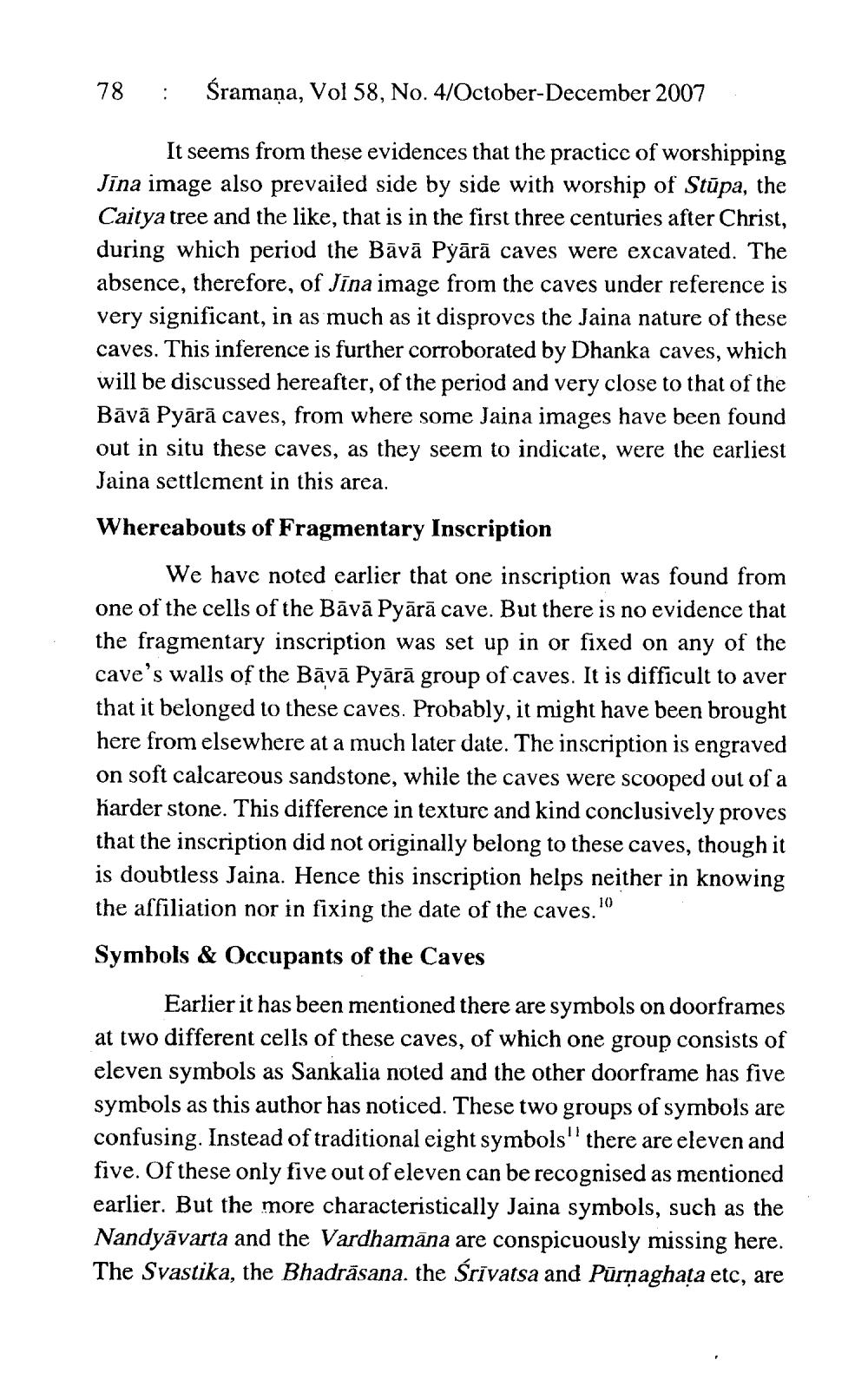________________
78
:
śramaņa, Vol 58, No. 4/October-December 2007
It seems from these evidences that the practice of worshipping Jīna image also prevailed side by side with worship of Stūpa, the Caitya tree and the like, that is in the first three centuries after Christ, during which period the Bāvā Pýārā caves were excavated. The absence, therefore, of Jina image from the caves under reference is very significant, in as much as it disproves the Jaina nature of these caves. This inference is further corroborated by Dhanka caves, which will be discussed hereafter, of the period and very close to that of the Bāvā Pyārā caves, from where some Jaina images have been found out in situ these caves, as they seem to indicate, were the earliest Jaina settlement in this area. Whereabouts of Fragmentary Inscription
We have noted earlier that one inscription was found from one of the cells of the Bāvā Pyārā cave. But there is no evidence that the fragmentary inscription was set up in or fixed on any of the cave's walls of the Bāvā Pyārā group of caves. It is difficult to aver that it belonged to these caves. Probably, it might have been brought here from elsewhere at a much later date. The inscription is engraved on soft calcareous sandstone, while the caves were scooped out of a harder stone. This difference in texture and kind conclusively proves that the inscription did not originally belong to these caves, though it is doubtless Jaina. Hence this inscription helps neither in knowing the affiliation nor in fixing the date of the caves.'' Symbols & Occupants of the Caves
Earlier it has been mentioned there are symbols on doorframes at two different cells of these caves, of which one group consists of eleven symbols as Sankalia noted and the other doorframe has five symbols as this author has noticed. These two groups of symbols are confusing. Instead of traditional eight symbols" there are eleven and five. Of these only five out of eleven can be recognised as mentioned earlier. But the more characteristically Jaina symbols, such as the Nandyävarta and the Vardhamāna are conspicuously missing here. The Svastika, the Bhadrāsana, the Śrīvatsa and Pūrņaghața etc, are




